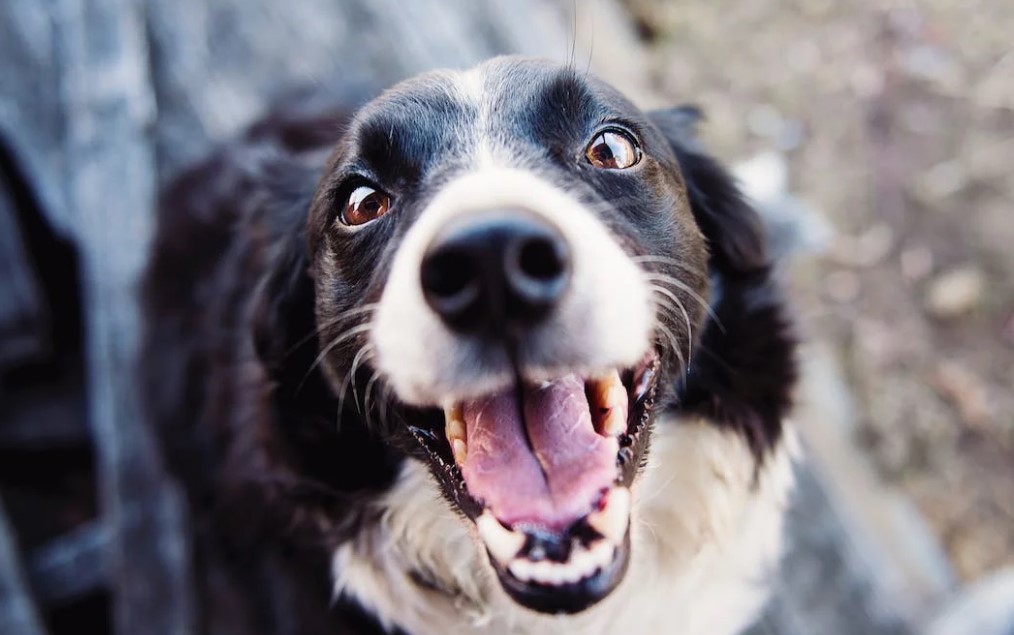
The difference between doggie breath and an unhealthy mouth is significant. Doggie breath can often smell unpleasant, however, it does not necessarily indicate a health issue. An unhealthy mouth, on the other hand, can have more serious consequences such as underlying illnesses or dental diseases.
Here are some signs that your dog’s breath may be an indicator of an unhealthy mouth:
If you notice any of these signs in your dog’s breath, it is important to have them examined by a vet as soon as possible.
The best way to detect dental problems early on is by doing daily checkups of your dog’s mouth. This can be done simply by lifting their lips and checking the gums and teeth for any abnormalities. Doing this regularly will help you spot any issues that may need attention before it becomes a bigger problem.
Additionally, brushing your dog’s teeth every day is a great way to ward off dental issues. If you don’t have the time or ability to brush your dog’s teeth daily, using special dental toys or treats can help control plaque buildup and keep their breath fresh. Also, regular use of dental gels is an effective way to prevent bacteria growth and tartar buildup.
Finally, it is important to take your dog for regular checkups at the vet in order to detect any serious issues early on and prevent them from worsening over time. If you notice anything unusual during your daily checks, or if your dog’s breath has become particularly bad, its best to go ahead and have them seen by a vet. Taking these precautions will help ensure that your dog’s mouth stays healthy and that their breath remains pleasant.
Owners can help their dogs with brushing teeth in several ways. First, it is important to buy a toothbrush and toothpaste specifically designed for canine use. Human toothpaste and mouthwash should be avoided as they can be toxic to dogs if ingested.
Additionally, start by introducing the brush slowly. Let your dog get used to it in their mouth without actually brushing first. This will help them become more comfortable with the process of brushing their teeth.
Once they are used to the brush, begin brushing their teeth with gentle circular motions. It is important to use a small amount of toothpaste and not too much pressure to avoid damaging your dog’s gums. If your dog struggles during the process, you can reward them for good behavior with treats or praise.
Brushing your dog’s teeth is a vital part of ensuring their overall oral health, however, it is important to use the right kind of toothbrush and toothpaste to avoid any potential damage to the gums or enamel. Here are some of the types of toothbrushes available for dogs:
No matter which type of toothbrush you use, it is important to remember that regular brushing with the right brush and toothpaste is essential for your dog’s oral health. Taking the time to properly brush your dog’s teeth will help them maintain a healthy mouth and keep their breath fresh.
In addition to brushing your dog’s teeth, there are several other treatments that can help with dental problems.
Regular brushing combined with these treatments can help keep your dog’s teeth clean and prevent any further issues from developing. However, if you are ever concerned about your dog’s oral health, it is best to seek professional advice from your vet.
Using human products on your dog’s teeth can carry a number of risks:
Overall, proper dog grooming is essential for maintaining your pup’s health and happiness. Brushing their teeth each day with the right toothbrush and toothpaste can help keep plaque and tartar buildup at bay while also freshening their breath. In addition to brushing, dental chews, rinses or gels may be used in combination to supplement regular oral hygiene practices. However, it is important that you avoid using human products on your pet's teeth as they are often too abrasive or toxic if ingested. Taking the time to brush your pup’s chompers will not only improve their overall health but also strengthen the bond between you two!
